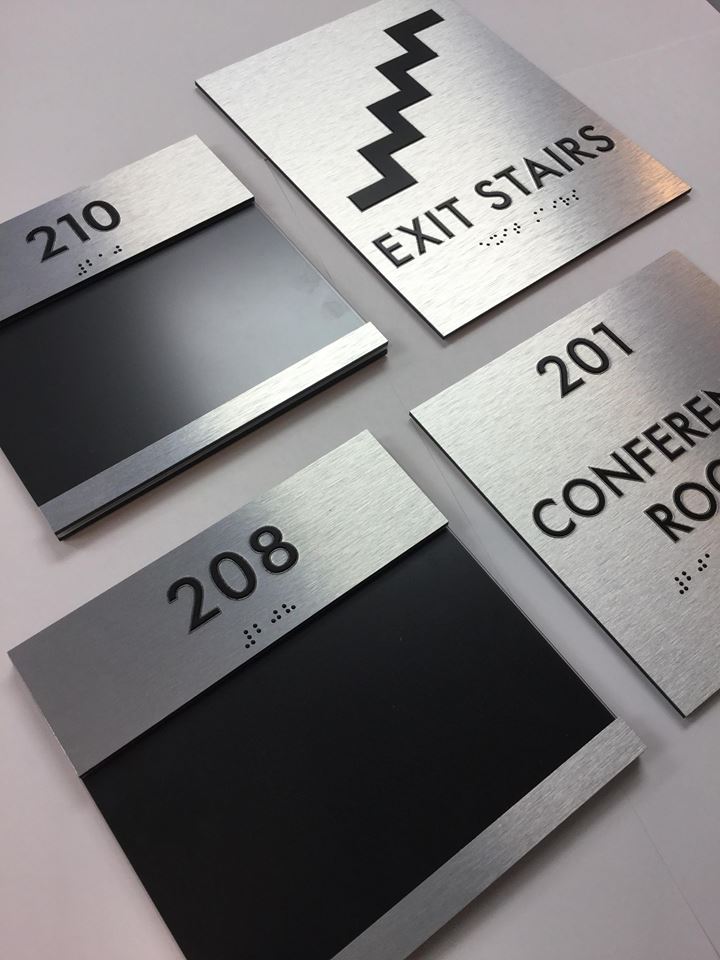Personalizing ADA Signs to Fulfill Your Specific Requirements
Personalizing ADA Signs to Fulfill Your Specific Requirements
Blog Article
Checking Out the Secret Features of ADA Signs for Enhanced Availability
In the world of accessibility, ADA signs function as silent yet powerful allies, making certain that areas are accessible and comprehensive for people with impairments. By integrating Braille and tactile components, these indications damage obstacles for the aesthetically impaired, while high-contrast color systems and clear typefaces deal with diverse aesthetic demands. Furthermore, their calculated placement is not approximate but rather a computed initiative to assist in smooth navigating. Yet, past these features exists a deeper narrative about the development of inclusivity and the recurring dedication to creating fair spaces. What much more could these indications symbolize in our quest of global availability?
Significance of ADA Compliance
Making sure conformity with the Americans with Disabilities Act (ADA) is crucial for cultivating inclusivity and equivalent accessibility in public rooms and workplaces. The ADA, enacted in 1990, mandates that all public facilities, companies, and transportation solutions accommodate individuals with specials needs, ensuring they enjoy the same rights and chances as others. Conformity with ADA requirements not just satisfies lawful obligations but additionally improves an organization's track record by showing its dedication to diversity and inclusivity.
One of the vital facets of ADA conformity is the application of easily accessible signage. ADA indicators are created to guarantee that individuals with disabilities can easily browse with areas and buildings.
In addition, sticking to ADA laws can mitigate the danger of potential penalties and legal effects. Organizations that fall short to follow ADA standards might face suits or fines, which can be both destructive and monetarily challenging to their public picture. Thus, ADA conformity is integral to promoting a fair setting for everybody.
Braille and Tactile Components
The consolidation of Braille and tactile elements into ADA signs personifies the concepts of access and inclusivity. It is commonly positioned underneath the matching message on signs to make certain that individuals can access the info without visual aid.
Responsive aspects extend past Braille and consist of increased characters and icons. These parts are made to be discernible by touch, enabling individuals to recognize space numbers, restrooms, exits, and various other critical areas. The ADA sets certain standards pertaining to the dimension, spacing, and positioning of these tactile components to enhance readability and make certain uniformity throughout various atmospheres.

High-Contrast Color Pattern
High-contrast shade schemes play a crucial role in improving the visibility and readability of ADA signage for people with visual impairments. These schemes are vital as they take full advantage of the distinction in light reflectance between message and background, making certain that indications are quickly discernible, also from a range. The Americans with Disabilities Act (ADA) mandates making use of particular shade contrasts to accommodate those with minimal vision, making it a crucial element of conformity.
The efficiency of high-contrast colors exists in their capability to attract attention in various lighting conditions, including dimly lit settings and locations with glow. Normally, dark text on a light history or light text on a dark history is used to attain optimal comparison. As an example, black text on a white or yellow background supplies a stark visual difference that aids in fast acknowledgment and comprehension.

Legible Fonts and Text Dimension
When thinking about the style of ADA signage, the option of readable fonts and proper text size can not be overemphasized. The Americans with Disabilities Act (ADA) mandates that font styles must be browse around here sans-serif and not italic, oblique, script, highly attractive, or of uncommon form.
According to ADA guidelines, the minimum message height should be 5/8 inch, and it should increase proportionally with viewing distance. Consistency in message size adds to a cohesive aesthetic experience, aiding people in browsing atmospheres efficiently.
Furthermore, spacing in between letters and lines is important to legibility. Ample spacing prevents characters from showing up crowded, boosting readability. By adhering to these requirements, designers can considerably improve ease of access, ensuring that signs offers its desired purpose for all individuals, despite their aesthetic capacities.
Efficient Placement Methods
Strategic positioning of ADA signage is important for taking full advantage of ease of access and guaranteeing compliance with legal requirements. ADA guidelines state that indicators need to be placed at a height in between 48 to 60 inches from the ground to ensure they are within the line of sight for both standing and seated people.
Furthermore, indicators should be positioned surrounding to the latch side of doors to permit very easy identification before entrance. Uniformity in sign placement throughout a center enhances predictability, reducing complication and improving total individual experience.

Verdict
ADA signs play an important function in promoting ease of access by incorporating functions that address the needs of individuals with disabilities. Including Braille and responsive aspects makes sure important information comes to the visually impaired, while high-contrast color plans and clear sans-serif font styles boost visibility across numerous lighting problems. Effective positioning approaches, such as ideal installing heights and calculated places, additionally help with navigation. These aspects collectively cultivate a comprehensive setting, highlighting the value of ADA conformity in ensuring equivalent gain access to for all.
In the world of availability, ADA signs offer as silent yet effective allies, making certain that spaces special info are navigable and comprehensive for people with handicaps. The ADA, enacted in 1990, mandates that all public centers, companies, and transport services fit individuals with disabilities, guaranteeing they appreciate the very same rights and opportunities as others. ADA Signs. ADA signs are developed to ensure that individuals with disabilities can easily browse through spaces and structures. ADA standards state that indications ought to be placed at a height in between 48 to 60 inches from the ground to guarantee they are within the line of view for both standing and seated individuals.ADA indications play a crucial duty in promoting ease of access by incorporating attributes that resolve the demands of individuals with impairments
Report this page